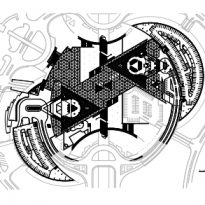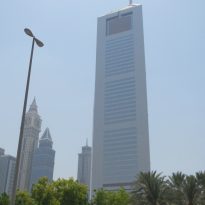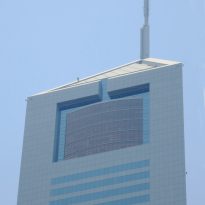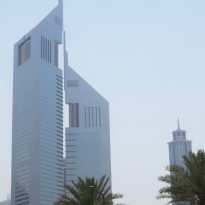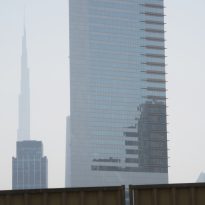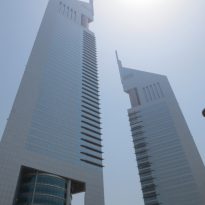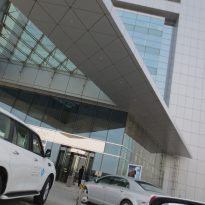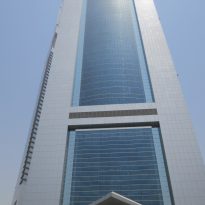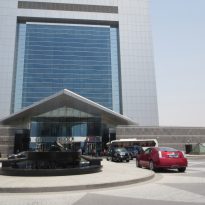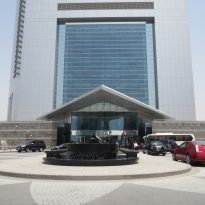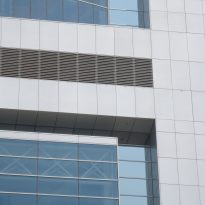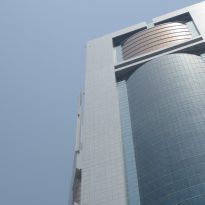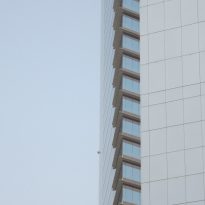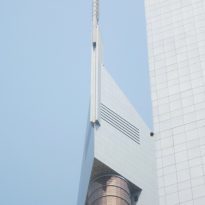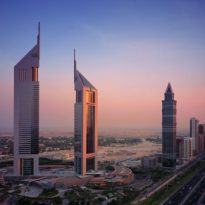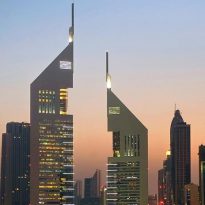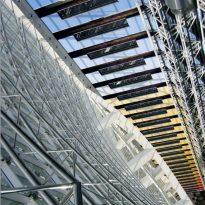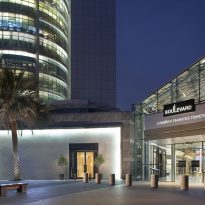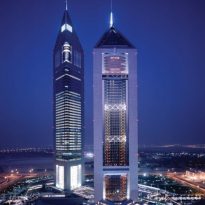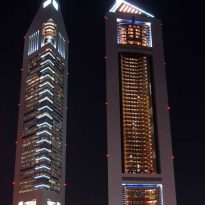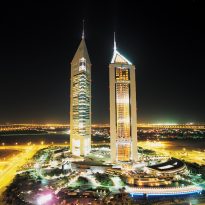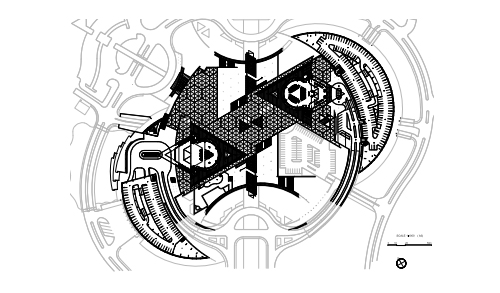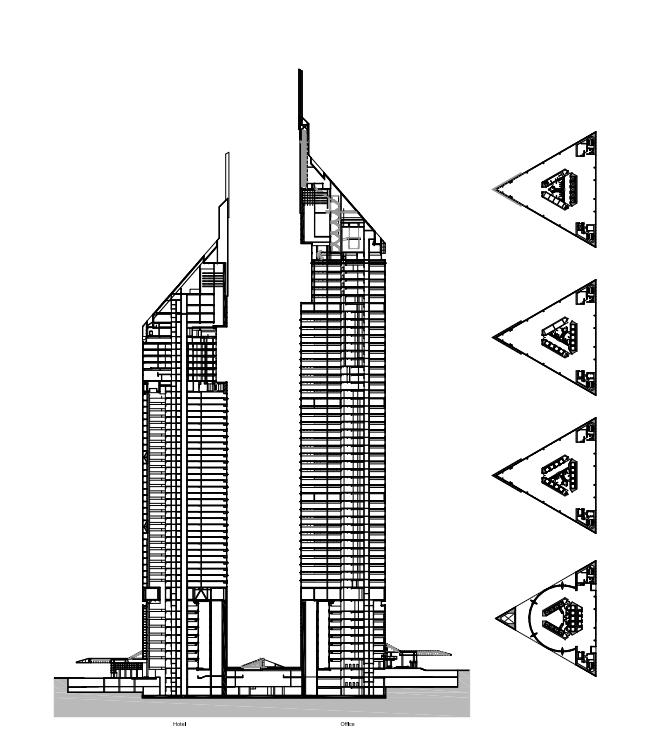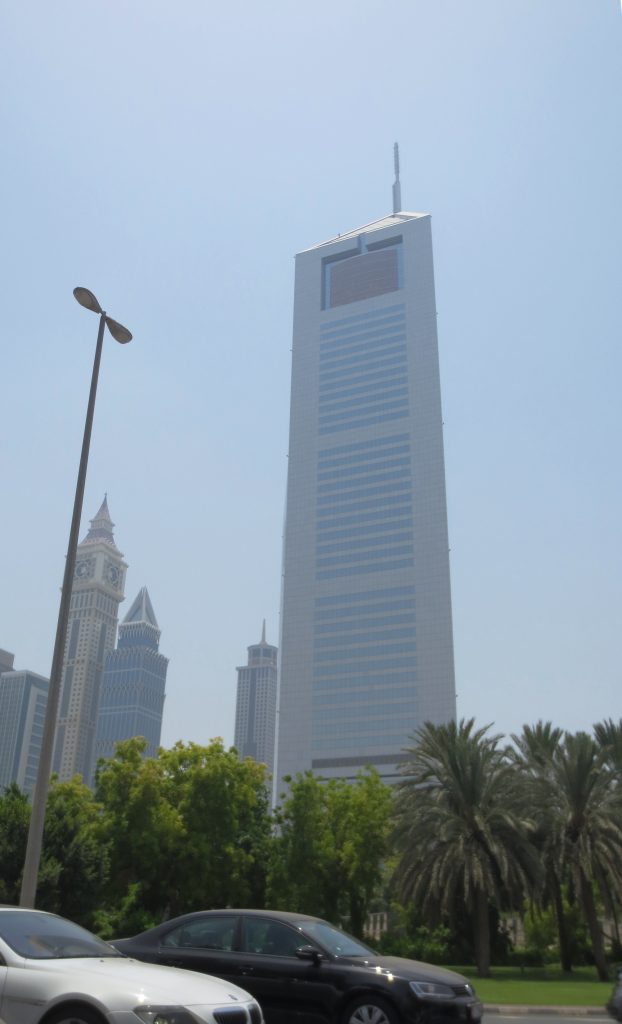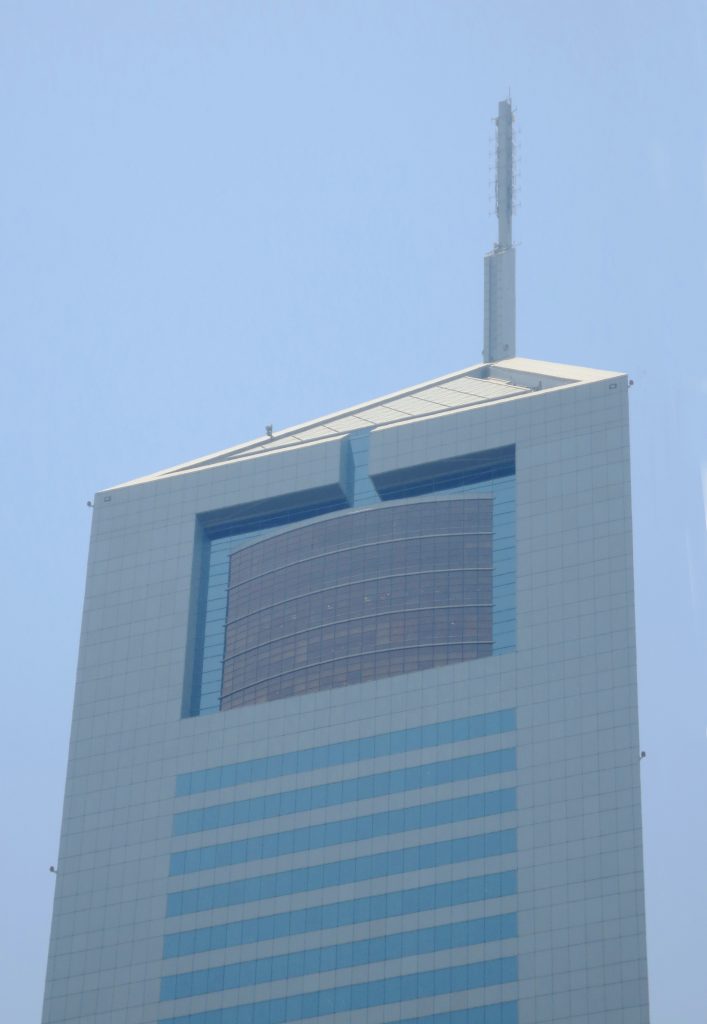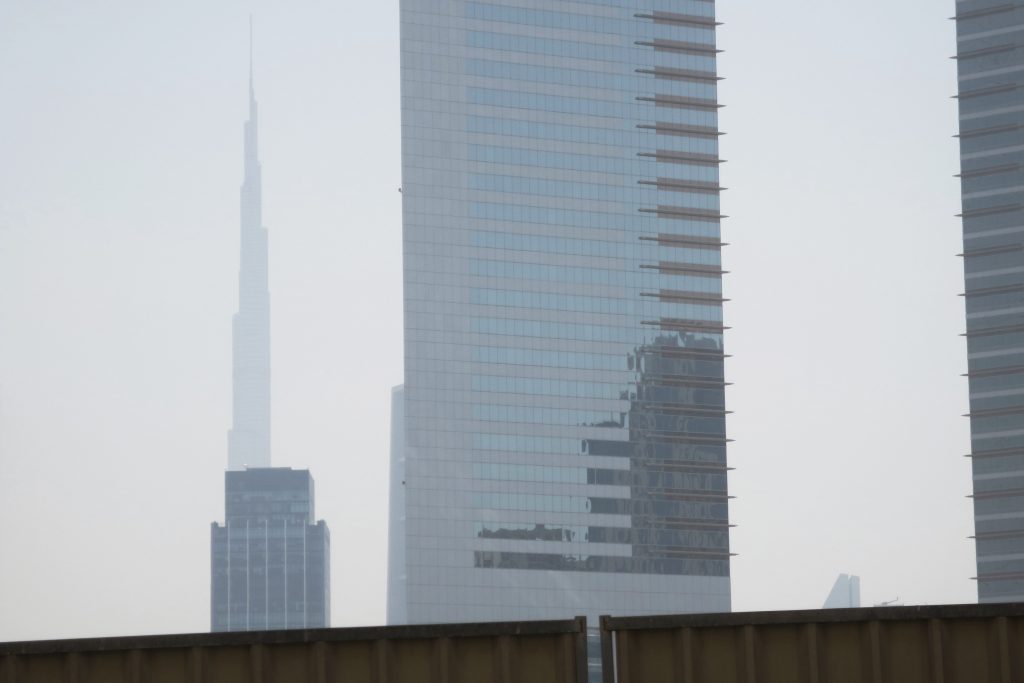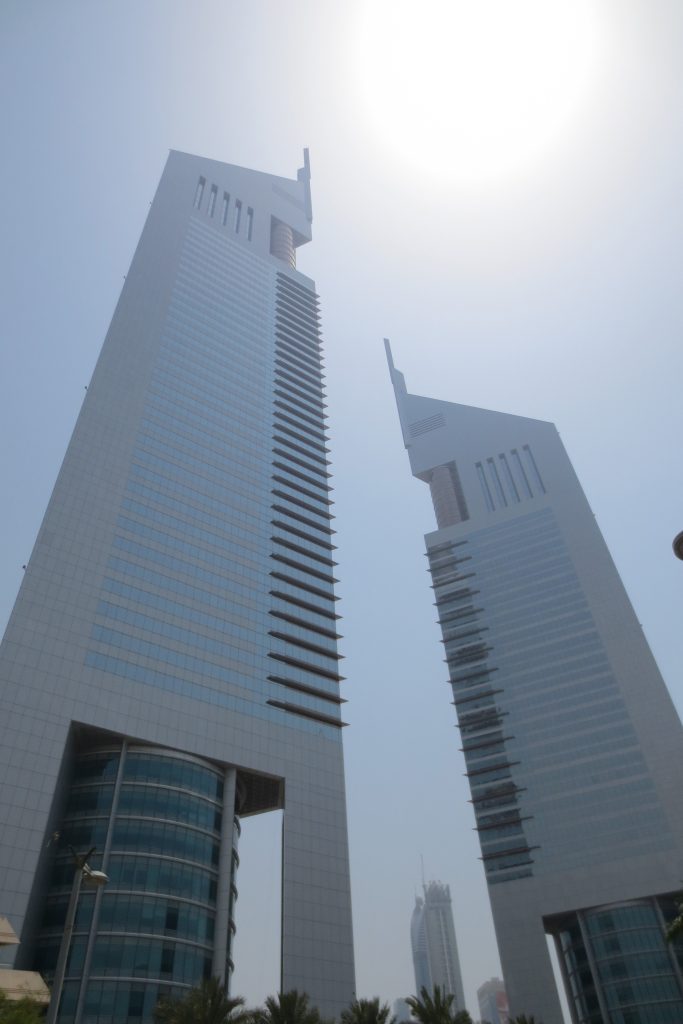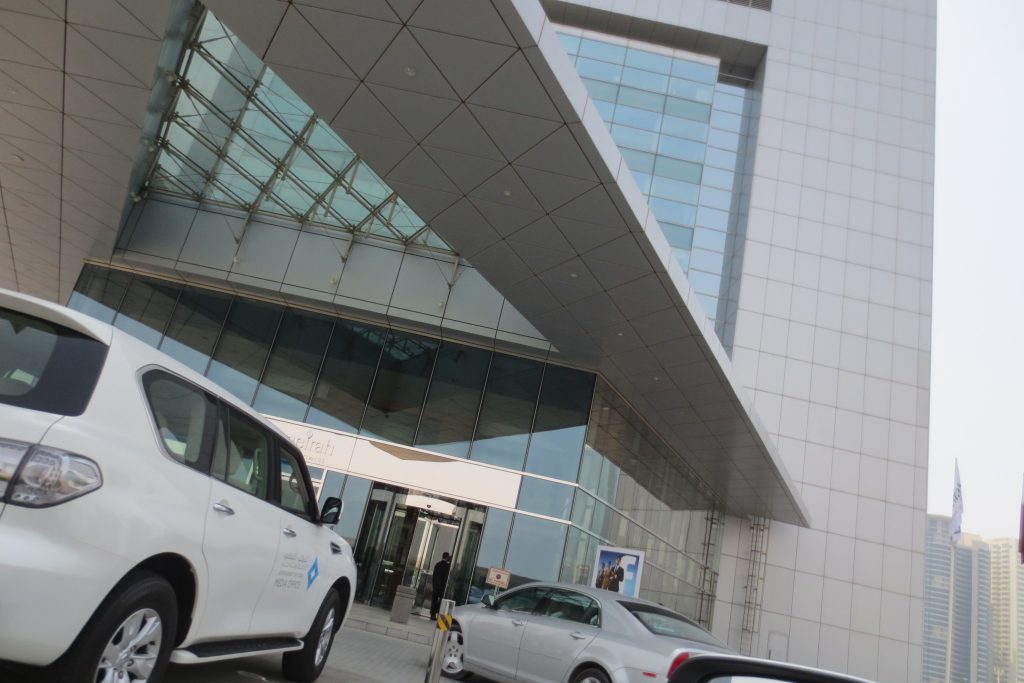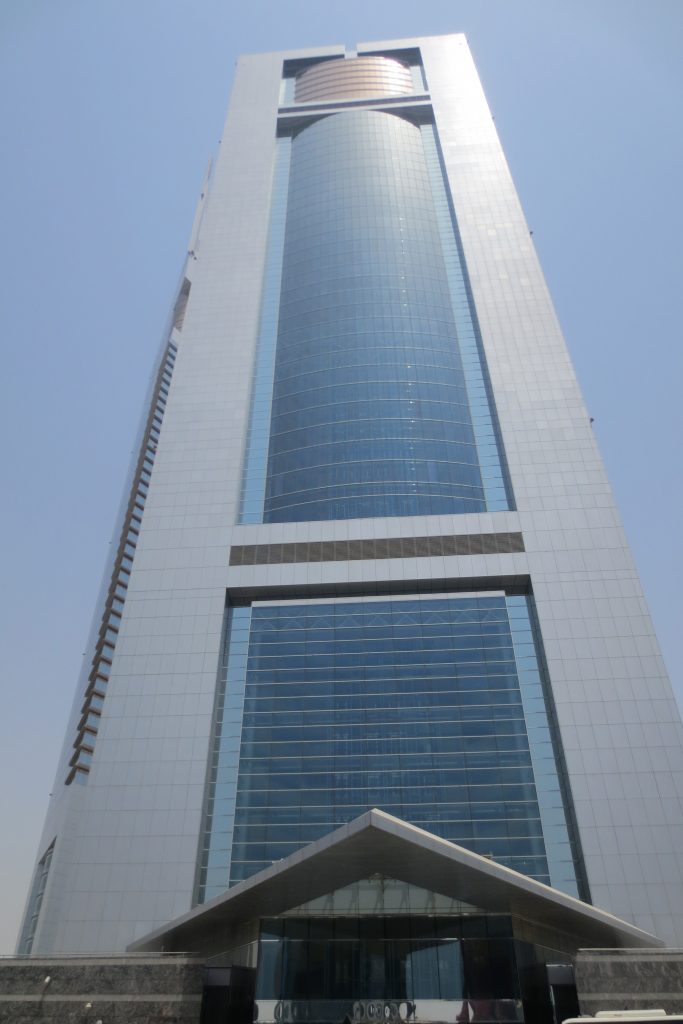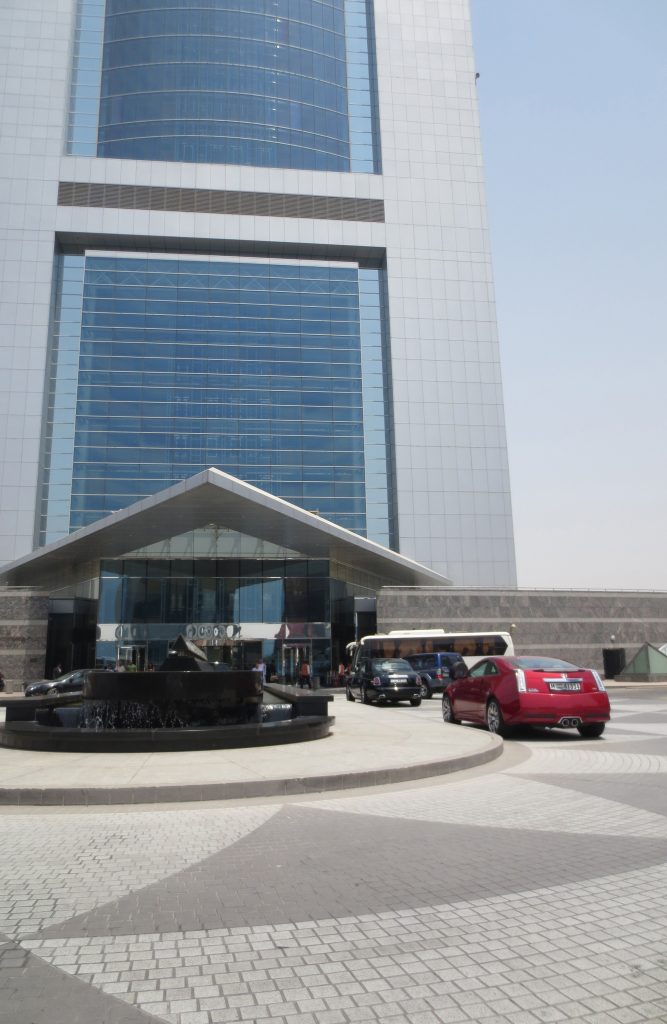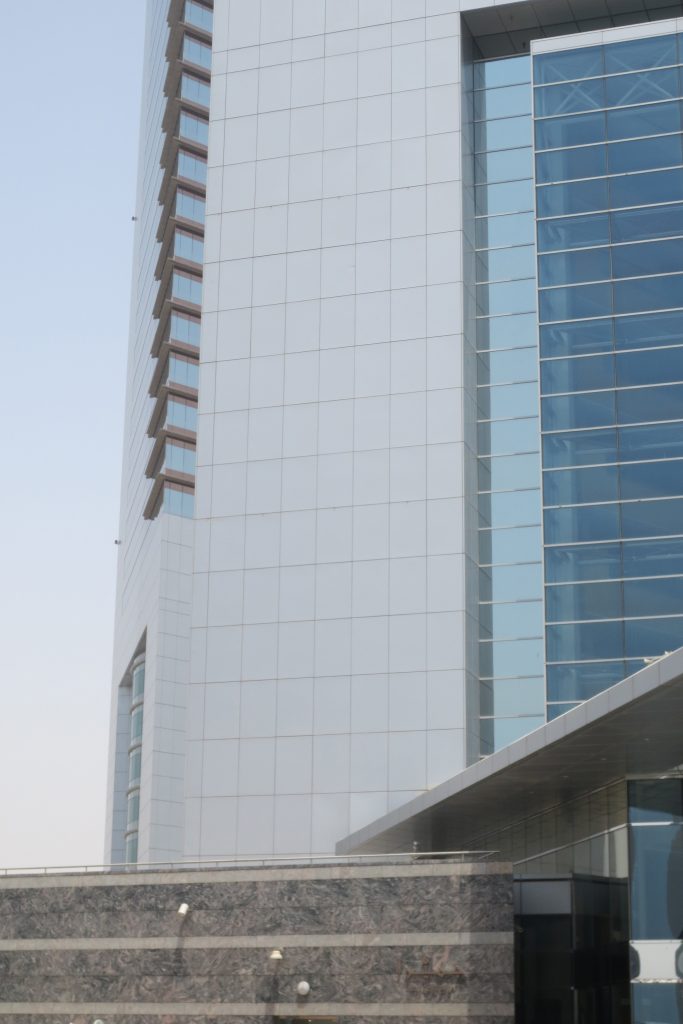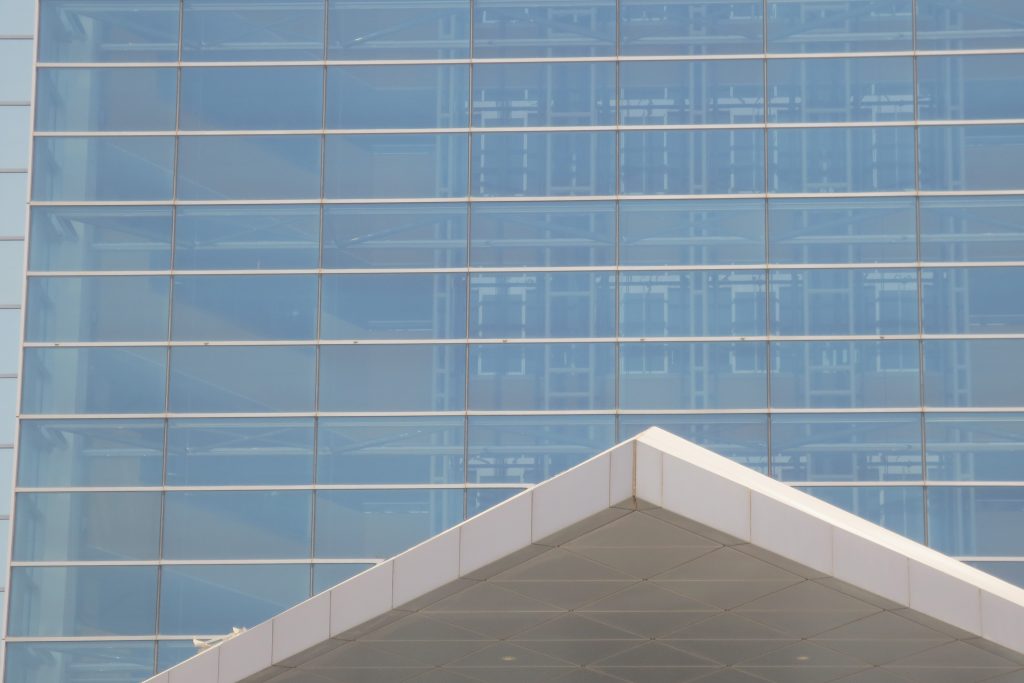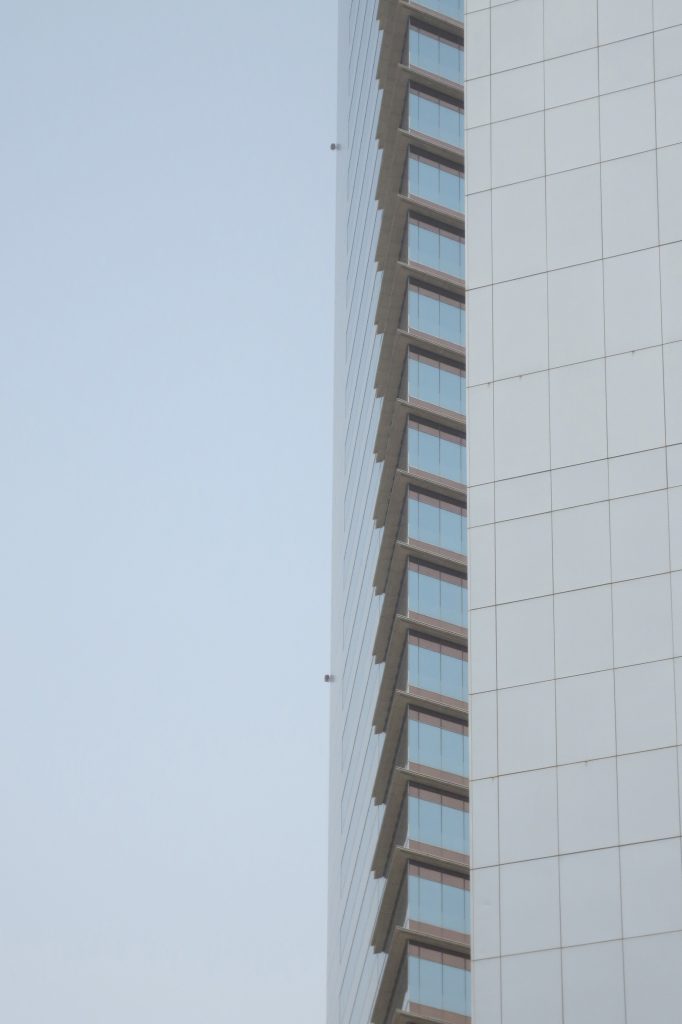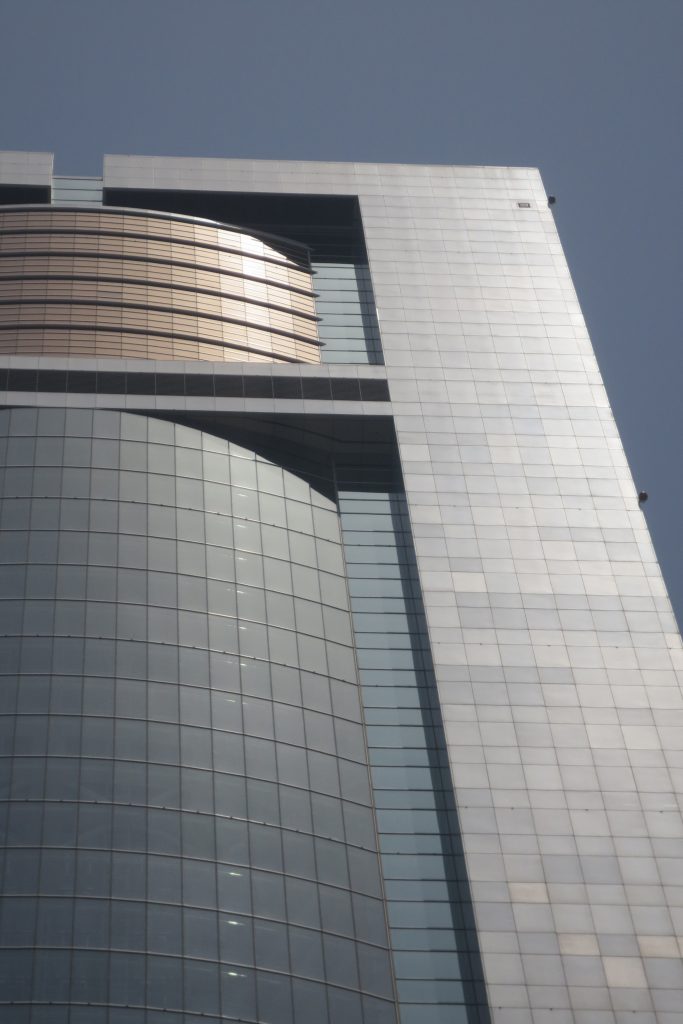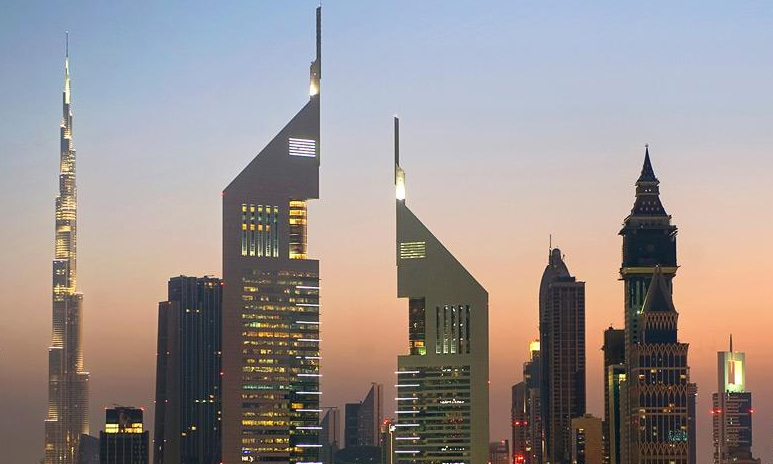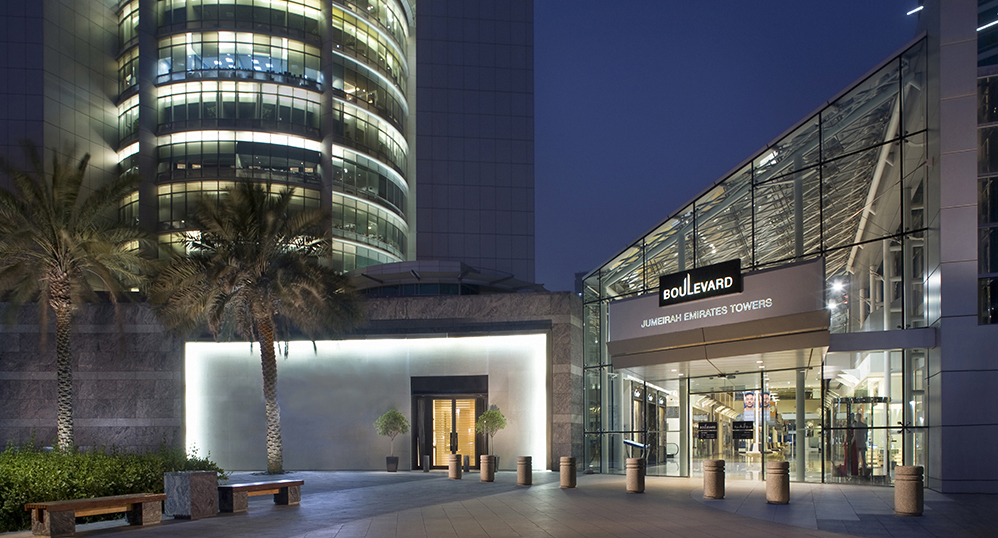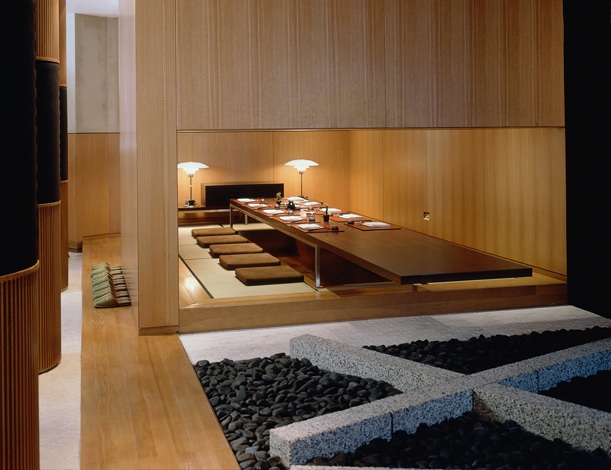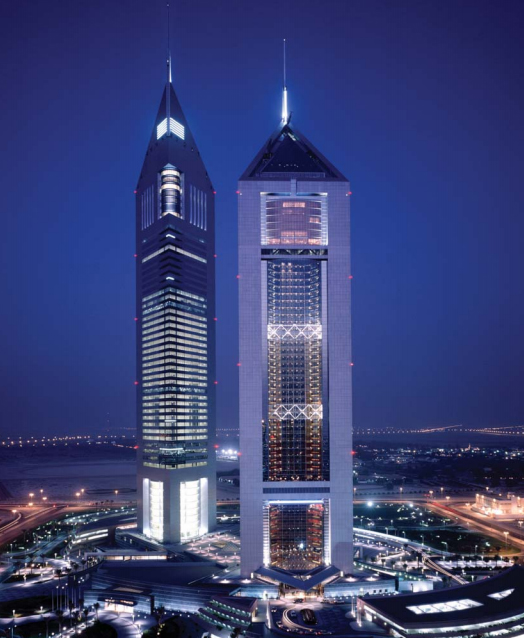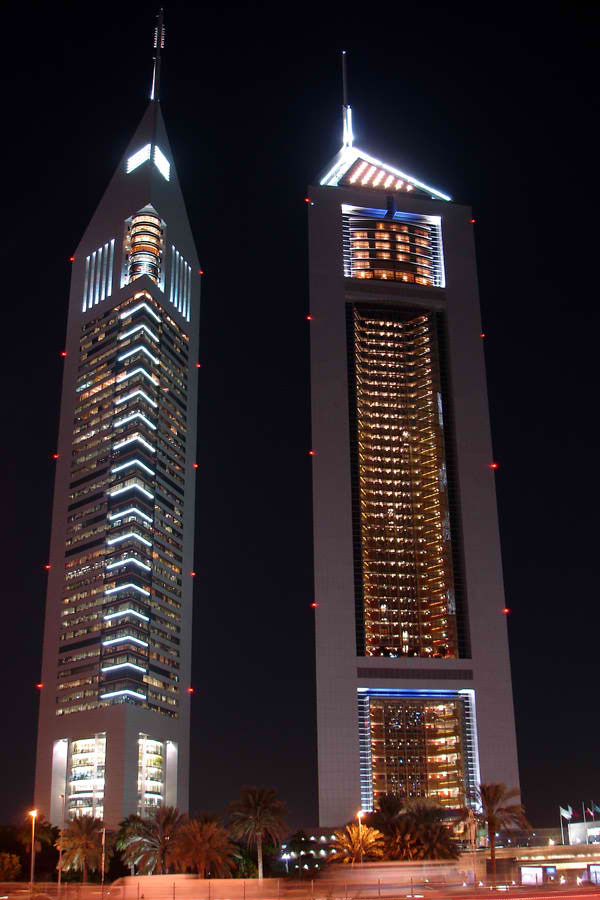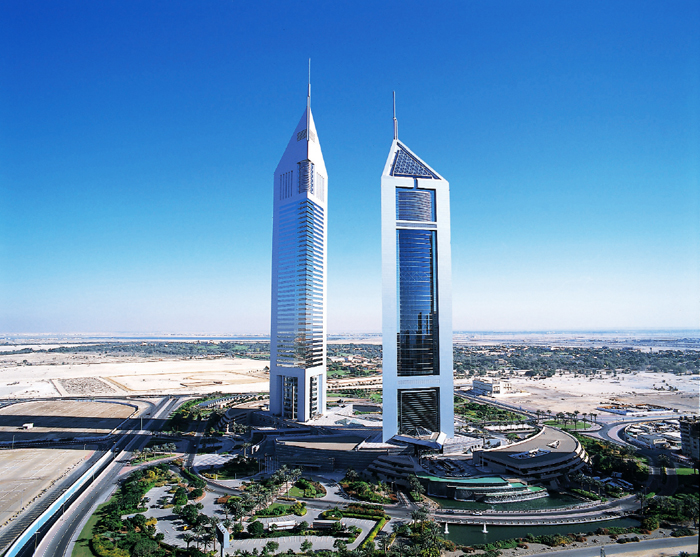Emirates Towers

Introduction
The two Emirates Towers Complex skyscrapers that rise 309 and 354.6 meters respectively are located between 23 º and 47 º tallest buildings in the world. Until the construction of Burj Khalifa were the tallest buildings Dubai. Despite the passage of time Emirates Towers remains one of the most admired profiles of the city skyline.
Construction
Construction of the project was particularly challenging due to the requirement of the client, Sheikh Mohammed Bin Rashid Al Maktoum, to be completed in 52 months. To meet this need, the design team in Dubai NORR worked with architects and engineers from Canada, United States and Australia.
Location
The Emirates Towers complex is located in the financial center of the city, on Sheikh Zayed Road and is a symbol of the city of Dubai, United Arab Emirates.
Within the most dynamic business district of the emirate, Emirates Towers provide easy access to the highway, shopping areas of Dubai International Airport, recreational facilities and the neighboring emirates.
Concept
The concept of the winning project, submitted by NORR Achitect, is a direct response to customer order and project owner, Sheikh Mohammed Bin Rashid Al Maktoum, Prime Minister of the Emiratos Árabes Unidos, who wanted that new buildings as a framework to the existing tower of Dubai World Trade Center, a memorial built by his late father.
Spaces
The Emirates Towers complex contains the Emirates Office Tower, Tower 1, and the luxurious Jumeirah Emirates Towers, Tower 2, (Jumeirah Emirates Towers Hotel), with 400 luxury rooms.
•The Boulevard

The two towers are joined at the bottom by a three-storey shopping center called “The Boulevard” with its 9,000 m² offers retail shops, restaurants and cafes.
•Hotel
Officially named as Emirates Tower Two (Emirates Tower Two), this building houses the five-star Hotel Tower Jumeirah Emirate.
One of the main features is a huge atrium that rises 31 floors, starting at level 11, and looking westward across the Gulf.
Focused as “business hotel” combines form and function, high technology and exquisite luxury, elegance and efficiency. It offers many restaurants and 400 rooms equipped with the most innovative technology and high finishes. Although the tower in which the hotel is located has more plants, 56, his height is below the office tower, 309m-354m, which only has 54 because of the increased floor to ceiling height of this last.
•Offices
The Emirates Towers office building, is officially known as Emirates Tower One (Emirates Tower One).
The tower has a busy lobby that serves as a major business meeting spaces in the city. It also has a conference center in the middle of the facilities and a first class restaurant located under the sloping roof.
The NORR Architects headquarters in the United Arab Emirates is located on third floor of the office tower.
The whole complex is surrounded by more than 570,000 m² of gardens, with lakes, waterfalls and rest areas open to the public. The parking lot accommodates 1,800 cars.
Structure and materials
Silver coated aluminum panels and reflective glass also in silver and copper, the contemporary and distinctive shape of these towers has become a symbol of modern Dubai. The towers rise from a podium staggered three floors, including a shopping center. Flanking each tower, at low altitude, appears curvilinear parking structure, reminiscent of the sand dunes of the surrounding desert.
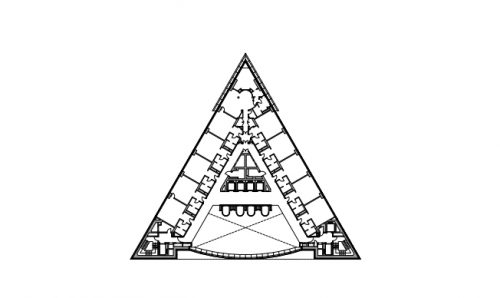
Both towers sit on three feet of concrete, located at the corners of the triangular plant, rising from 53.5m raft slab, and in a large glass centerpiece.
- Needles
The needles 43.7m rise above the top of both buildings, hotel and office tower, are rectangular cross section, making them aerodynamically sensitive.
Wind tunnel studies
• Information on structural loads and building movements in both towers was determined using a modeling technique force balance. Aeroelastic tests of the two needles provided information on wind loads and deformations, which was used in the design of the damping system for them.
• Information was also obtained about the pressures of coating used in the two buildings and the extensive lower structure, performing measurements at 700 different locations in the structure.
• structural loads on the support brackets glass atrium in the hotel tower, including cases of unbalanced loads were determined from detailed simultaneous measurements of pressure.
• A special analysis of wind climate of Dubai revealed that the diurnal pattern was different. For several days were studied before construction movements winds “days statistically typical”. The wind speed at pedestrian level was studied in 34 points lower structure surrounding the resort.
Video




